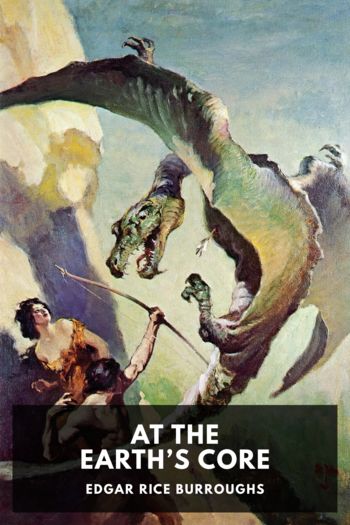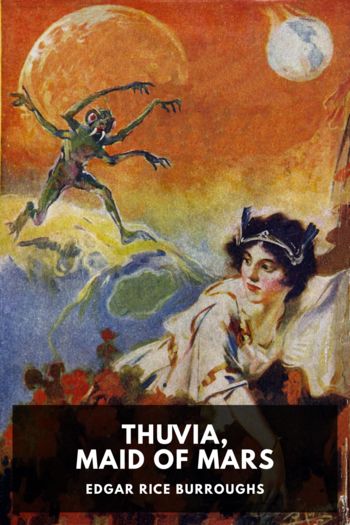The Land That Time Forgot by Edgar Rice Burroughs (short books to read .txt) 📕

Description
The Land That Time Forgot opens with the discovery near Greenland of a floating thermos flask containing a manuscript by castaway Tyler Bowen, Jr. The document recounts a series of adventures that starts with a sea battle against a German U-boat and ends on a mysterious island populated by hostile prehistoric animals and people.
The second part of the book, “The People That Time Forgot,” continues the story with the tale of Tom Billings, who has been sent on a mission to rescue Bowen after his manuscript was discovered. He flies solo over the mountainous cliffs that encircle the island and is attacked by a monstrous flying reptile, forcing him to crash-land. Billings then attempts to make his way on foot back to the rest of his party while contending with dangerous inhabitants from different stages of human development.
The final installment of the story, “Out of Time’s Abyss,” reveals what happened to Bradley, a crew member who was sent on a scouting expedition earlier in the story and was never heard from again.
This trilogy of short novels was originally published serially in 1918 in Blue Book Magazine. In 1924 they were published in a single volume by A. C. McClurg. The Burroughs fan community seems to fall into two camps about whether the story comprises three separate novellas, or whether it’s a single novel divided into three parts. This production follows the 1924 edition in combining the three into a single novel.
Read free book «The Land That Time Forgot by Edgar Rice Burroughs (short books to read .txt) 📕» - read online or download for free at americanlibrarybooks.com
- Author: Edgar Rice Burroughs
Read book online «The Land That Time Forgot by Edgar Rice Burroughs (short books to read .txt) 📕». Author - Edgar Rice Burroughs
Bradley looked about him. No, he could not escape—that seemed evident. The city appeared interminable, and beyond the city, if not a savage wilderness filled with wild beasts, there was the broad inland sea infested with horrid monsters. No wonder his captor felt safe in turning him loose in Oo-oh—he wondered if that was the name of the country or the city and if there were other cities like this upon the island.
Slowly he descended the ladder to the seemingly deserted alley which was paved with what appeared to be large, round cobblestones. He looked again at the smooth, worn pavement, and a rueful grin crossed his features—the alley was paved with skulls. “The City of Human Skulls,” mused Bradley. “They must have been collectin’ ’em since Adam,” he thought, and then he crossed and entered the building through the doorway that had been pointed out to him.
Inside he found a large room in which were many Wieroos seated before pedestals the tops of which were hollowed out so that they resembled the ordinary bird drinking- and bathing-fonts so commonly seen on suburban lawns. A seat protruded from each of the four sides of the pedestals—just a flat board with a support running from its outer end diagonally to the base of the pedestal.
As Bradley entered, some of the Wieroos espied him, and a dismal wail arose. Whether it was a greeting or a threat, Bradley did not know. Suddenly from a dark alcove another Wieroo rushed out toward him. “Who are you?” he cried. “What do you want?”
“Fosh-bal-soj sent me here to eat,” replied Bradley.
“Do you belong to Fosh-bal-soj?” asked the other.
“That appears to be what he thinks,” answered the Englishman.
“Are you cos-ata-lu?” demanded the Wieroo.
“Give me something to eat or I’ll be all of that,” replied Bradley.
The Wieroo looked puzzled. “Sit here, jaal-lu,” he snapped, and Bradley sat down unconscious of the fact that he had been insulted by being called a hyena-man, an appellation of contempt in Caspak.
The Wieroo had seated him at a pedestal by himself, and as he sat waiting for what was next to transpire, he looked about him at the Wieroo in his immediate vicinity. He saw that in each font was a quantity of food, and that each Wieroo was armed with a wooden skewer, sharpened at one end; with which they carried solid portions of food to their mouths. At the other end of the skewer was fastened a small clamshell. This was used to scoop up the smaller and softer portions of the repast into which all four of the occupants of each table dipped impartially. The Wieroo leaned far over their food, scooping it up rapidly and with much noise, and so great was their haste that a part of each mouthful always fell back into the common dish; and when they choked, by reason of the rapidity with which they attempted to bolt their food, they often lost it all. Bradley was glad that he had a pedestal all to himself.
Soon the keeper of the place returned with a wooden bowl filled with food. This he dumped into Bradley’s “trough,” as he already thought of it. The Englishman was glad that he could not see into the dark alcove or know what were all the ingredients that constituted the mess before him, for he was very hungry.
After the first mouthful he cared even less to investigate the antecedents of the dish, for he found it peculiarly palatable. It seemed to consist of a combination of meat, fruits, vegetables, small fish and other undistinguishable articles of food all seasoned to produce a gastronomic effect that was at once baffling and delicious.
When he had finished, his trough was empty, and then he commenced to wonder who was to settle for his meal. As he waited for the proprietor to return, he fell to examining the dish from which he had eaten and the pedestal upon which it rested. The font was of stone worn smooth by long-continued use, the four outer edges hollowed and polished by the contact of the countless Wieroo bodies that had leaned against them for how long a period of time Bradley could not even guess. Everything about the place carried the impression of hoary age. The carved pedestals were black with use, the wooden seats were worn hollow, the floor of stone slabs was polished by the contact of possibly millions of naked feet and worn away in the aisles between the pedestals so that the latter rested upon little mounds of stone several inches above the general level of the floor.
Finally, seeing that no one came to collect, Bradley arose and started for the doorway. He had covered half the distance when he heard the voice of mine host calling to him: “Come back, jaal-lu,” screamed the Wieroo; and Bradley did as he was bid. As he approached the creature which stood now behind a large, flat-topped pedestal beside the alcove, he saw lying upon the smooth surface something that almost elicited a gasp of astonishment from him—a simple, common thing it was, or would have been almost anywhere in the world but Caspak—a square bit of paper!
And on it, in a fine hand, written compactly, were many strange hieroglyphics! These remarkable creatures, then, had a written as well as a spoken language and besides the art of weaving cloth possessed that of paper-making. Could it be that such grotesque beings represented the high culture of the human race within the boundaries of Caspak? Had natural selection produced during the countless ages of Caspakian life a winged monstrosity that represented the earthly pinnacle of man’s evolution?
Bradley had noted something of the obvious indications of a gradual evolution from ape to spearman as exemplified by the several overlapping races of Alalus, club-men and hatchet-men that formed the connecting





Comments (0)